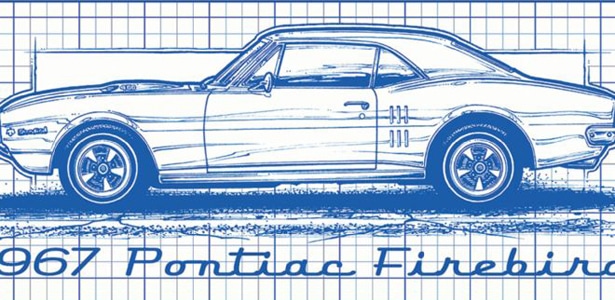
For years it has been accused as being a copycat Camaro and there is a bit of truth to that. However the Firebird has managed to blaze its own trail of classic car history with four generations of Pontiac power.
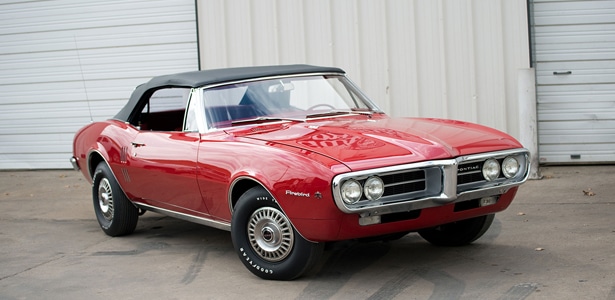
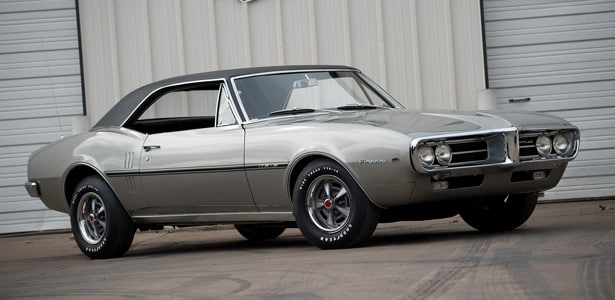
The very first Firebird hit the public streets on February 23, 1967 in both a coupe and convertible models. (The images above are of the actual 1st and 2nd Firebird productions ever made.) The creation of the first Firebird not only shared the basic frame structure of the Camaro, but most of the body metal as well. The Door skins, front fenders, and rear quarter panels were all taken directly from the Camaro. The rear quarters had a simulated vent stamped in, but otherwise were identical.
The differences came with the split front grill, the beaked out hood and the taillights that looked more like they came off a GTO. The engines also differed from its cousin Camaro. The Firebird was offered with five different motors and all of them were made exclusively by Pontiac. Even though their were only two body styles, Pontiac still marketed all the motor options as five different versions of the car.
Of all the engines offered it was the overhead cam inline six. The smallest 230 cubic inch, 3.8 liter motor pumped out 165 horsepower all from a one barrel carburetor. The next step up was the “Sprint” version. A four barrel carb and an increased compression ratio pushed the horsepower up to 215. Both versions were backed by either a three- or four-speed manual or a two-speed Powerglide automatic transmission.
The majority of early Firebird owners, however, went for the power of Pontiac’s V8 motors. A low-compression two-barrel 326-cubic-inch V8 that put out 250-horsepower was the base V8. The next step up was a higher-compression four-barrel “H.O.” version that put out 285 horsepower. There biggest engine was a beastly 400-cubic-inch that offered an impressive 325 horsepower. Beyond that, Pontiac’s Ram Air cold-air induction system (actually making the hood scoops on the Firebird 400 functional) was an option with the 400, even though it didn’t do much for horsepower. The system also cost an extra $600 and very few opted for it. Other than the addition of the three-speed Turbohydramatic autobox transmission, the V8s offered the same transmission options as the smaller V6s.
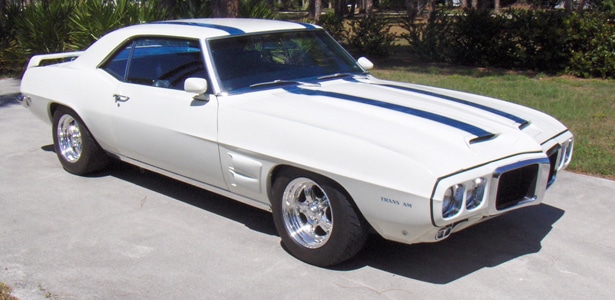
The first generation Firebird (1967-1969) did not see too many changes for the first 2 years. It wasn’t until 1969 that the world was introduced to the Pontiac Firebird Trans Am! Extra power isn’t what made the Trans Am exceptional. It was the improved handling and unique looks that set it apart.
It was created to partake in the SCCA’s road racing series. This Trans Am was given a de-stroked 303-cubic-inch V8 that never made it into the production car. Pontiac came to an agreement with the racing organization to pay a $5 licensing fee for every Trans Am sold in order to use the name.
There were many features that made the new Trans Am special including a special dual intake scooped hood, deck spoiler, fender vents and white with blue stripe paint scheme that made it the best looking Firebird yet. It also handled much better with its lowered suspension, big anti-sway bars, and larger tires. The Ram Air III system or Ram Air IV 400 V8 cranked out 335 horsepower which was a lot of power in those days! Surprisingly only 697 were sold the first year which was quite a slow start for what would eventually become an American icon.

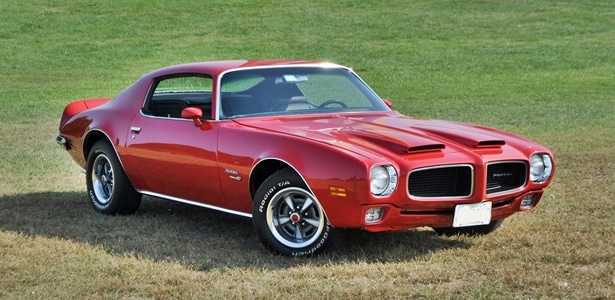
The second generation Firebird (1970-1981) once again followed many styling cues from its Chevy Camaro cousin. Throughout the decade the car would become more compact and more of a beast! The most memorable design element of the second generation was the plastic “Endura” nose that completely surrounded the split grille and single headlamps and gave the Firebird a “no bumper” look. It was an incredible styling upgrade and made the Firebird look like an American muscle car that was designed by Italians.
There were 4 models available for the Firebird. The base model, Esprit, Formula 400 and of course the Trans Am. The Pontiac OHC six cylinder was replaced with the Chevrolet 250 cubic inch straight six that produced a weak 155 horsepower. Some think this was a tactic to get buyers to step up to the V8 which they did.
When buyers ponied up for the V8 they had the choice of the two barrel 350 that put out 255 horsepower or they could go for the four barrel Formula 400 that put out 330 horsepower and also boasted the unique twin scooped hood. The star of the show however was the Trans Am. It had a rear-breathing shaker hood scoop, deep front spoiler, front fender vents and full-width rear spoiler. You could get it in two different color combos. White with blue racing stripes or blue with white racing stripes. Both came with the small bird stencil at the tip of the nose and Trans Am written across the rear spoiler.
Once again buyers had the choice of either the Ram Air III 400 V8 making 335 horsepower or the optional 345 horsepower Ram Air IV. The suspension at the time was tuned by the famous racer Herb Adams who happened to be a GM engineer at the time. The trans am was considered to be the best handling American car at the time, even beating out the Corvette. Just over 3,000 of these were sold the first year, but it was the car that would go on to define the rest of the decade.
With new emission controls being set in by the government, the muscle car revolution in America saw major challenges trying to maintain power while satisfying Uncle Sam’s new rules. Pontiac almost canceled the Firebird all together. A strike at GM in 1972 limited the production of Trans Am to only 1,296 that year.
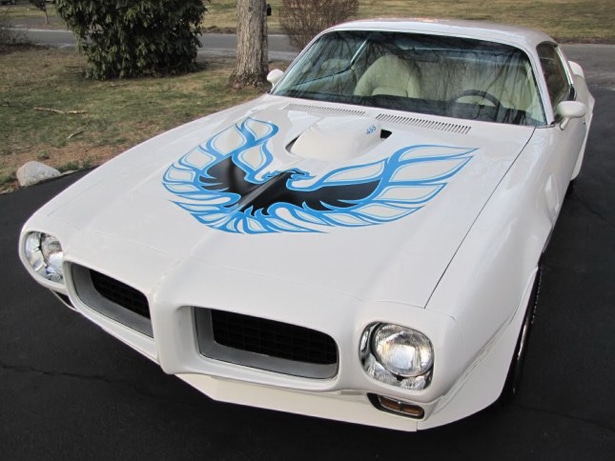
1973 didn’t look good either so Pontiac decided to go big or go home and this was the year that the “Big Bird” made its first appearance across the hood. Bumper regulations necessitated a new front end for the 1974 Firebirds with a slight wedge shape and a revised rear end with a body-color bumper and longer slotted tail lamps.

The 1975 Firebirds were easy to distinguish from the ’74s by their wraparound rear window, but were otherwise quite similar.
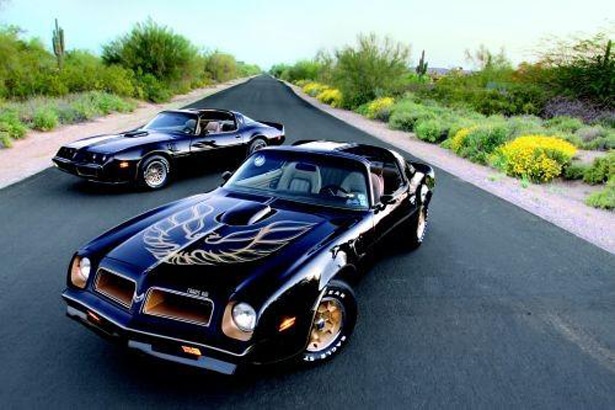
1976 was the final year of the 455 in the Trans Am and the release of the black-and-gold Special Edition Trans Am. It was the first time that the Firebird was released with T-tops is the most infamous Firebird in history. The 1976 Firebirds sold a combined 100,000 units!
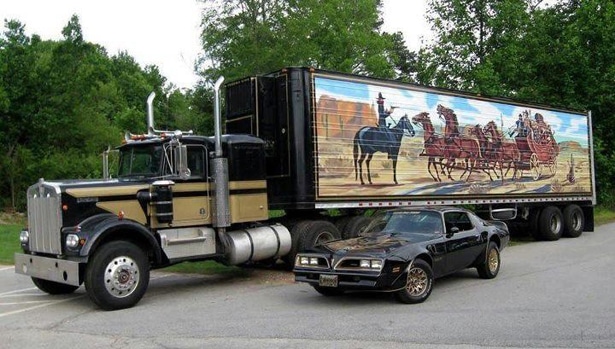
In 1977 Burt Reynolds made the car a Hollywood icon in the hit movie “Smokey and the Bandit”. Every boy that laid his eyes on it wanted one. Fun fact is that the Trans Am used in the movie was actually a 1976 with a 1977 front end on it and the new decals were added as well.
With the demand that the movie created, not much changed on the Firebird for the next few years. 1978 was actually the best year of sales ever for the Firebird. Americans purchased 93,341 Trans Ams and 93,944 Firebirds for an amazing grand total of 187,285.

For many collectors the third generation Firebird (1982-1992) is where the fun ended. It truly was new in fundamental ways. The sub-frame construction gave way for a new full unibody hatchback with a modified MacPherson strut suspension in the front and a solid axle on coil springs located by a large torque arm in the back.
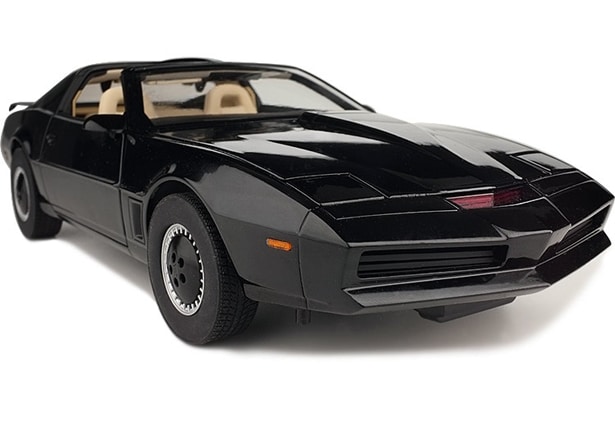
Despite David Hasselhoff’s attempts to make the car cool again with the hit show Knightrider, the Firebird just lost its appeal with the public and by 1992 GM new that the Firebird’s days were numbered.
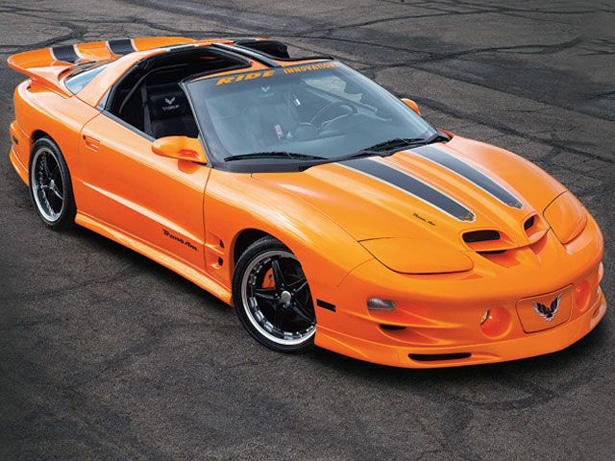
The fourth generation Firebird (1993-2002) saw some good attempts to keep the car alive and Pontiac had a good run with the car. Body kits galore were introduced to help customize the look of the car to help give owners a unique ride.
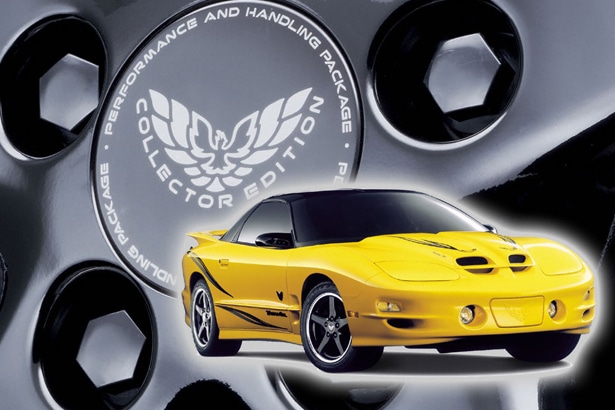
The final Firebird was produced in 2002 with the 35th Anniversary version to celebrate. IT featured a yellow paint job with special graphics. Kind of a let down to many gear-heads who idolized the car for decades.
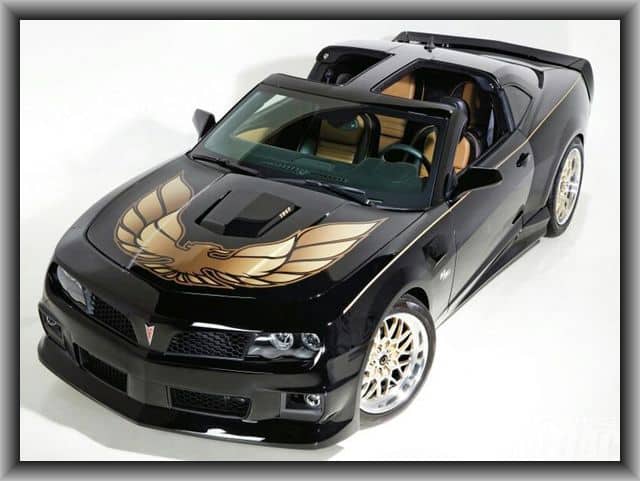
Never fear though! With the recent release of the new Camaro there are conversion kits that one can acquire to recreate the glory days of the Trans Am. Just in case you are nostalgic and are still singing these lyrics “East bound and down, loaded up and truckin’. We’re gonna do what they say can’t be done. We’ve got a long way to go, and a short time to get there. I’m east bound, just watch ole bandit run.”
